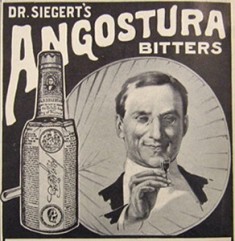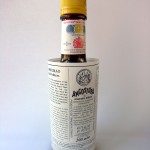Orchestrating the on-time arrival of the guest’s food is one of the most complicated responsibilities of a server. To do so, we must make sure the table is properly cleared and reset for the next course which can be difficult if the people seated at the table aren’t focused on the act of eating. If you don’t finish your food in a timely manner, the chef with anger-management issues will usually blame your server for it. One of the biggest impediments to the natural progression of the meal is what we call “The Polite Bite.” This phenomenon usually occurs when the last bite of food on a dish shared by the table is left unfinished because no one wants to be perceived as greedy.  As a result, the Polite Bite will sit on the table decomposing while the staff struggles to determine whether the next course of the meal may be safely fired. The server will usually have to impose himself with an attempt to clear the table to speed things along. Most of the time, a guest will say “C’mon someone has to finish that last bite!” As long as the standoff continues, your next course will sit under a heat lamp until the table is finally cleared. It will help your restaurant experiences flow more smoothly if you can train yourself to be more sensitive to the dynamics that are going on around you. You came to this restaurant to eat dinner. So, eat!! It’s perfectly acceptable to have an immersive conversation but pay attention to the staff’s efforts to choreograph your meal. Do your part by eating your food, and we’ll do our part by serving it.
As a result, the Polite Bite will sit on the table decomposing while the staff struggles to determine whether the next course of the meal may be safely fired. The server will usually have to impose himself with an attempt to clear the table to speed things along. Most of the time, a guest will say “C’mon someone has to finish that last bite!” As long as the standoff continues, your next course will sit under a heat lamp until the table is finally cleared. It will help your restaurant experiences flow more smoothly if you can train yourself to be more sensitive to the dynamics that are going on around you. You came to this restaurant to eat dinner. So, eat!! It’s perfectly acceptable to have an immersive conversation but pay attention to the staff’s efforts to choreograph your meal. Do your part by eating your food, and we’ll do our part by serving it.
Angostura: The King Of Bitters

Take a poll of modern mixologists asking the few essential ingredients a bar cannot live without and you’ll likely find Angostura Bitters at the top of most lists. Despite evolving trends in cocktail culture, Angostura has endured and its production methods—almost 200 years later—have remained faithful to the original. The diminutive bottle with the oversized paper label is ubiquitous in every serious cocktail bar and every amateur’s stash at home… but what is it?
The recipe for Angostura Bitters was developed by a German Doctor, Johann Siegert, who was a Surgeon General in Simon Bolivar’s army in Venezuela. He created his tincture, “Dr. Siegert’s Aromatic Bitters”, to treat soldiers with upset stomachs. Siegert originally produced the tonic for sale in 1824 in the town of Angostura where he was based in Venezuela, now known as Ciudad Bolivar. In 1875, commercial production of Angostura Bitters moved to a plant in Port of Spain, Trinidad not long after Dr. Siegert passed away. It continues there today.
 Why does that label hang over the edge like that?
Why does that label hang over the edge like that?So, why doesn’t the label fit right? When Dr. Siegert’s two sons took over the production of their father’s bitters they decided to enter them into a competition. One brother was responsible for designing the bottle and the other would be responsible for designing the label. Without consulting each other, the labels and bottles produced were ill-fitting and did not adhere properly. By the time they realized the mistake, it was too late. Though they lost in the competition, a judge suggested that the awkward label could make the product more memorable and a useful tool for marketing.
The ingredients that make up Angostura are closely guarded. There are only five people at the plant, called “manufacturers”, who are responsible for preparing the secret ingredients that go into Angostura production. Many of the ingredients are flown in from England. It is bottled at 44.7% alcohol by volume diluted with water, brown sugar, and caramel coloring.
 The Pisco Sour
The Pisco SourPopular classic cocktails that traditionally contain Angostura are The Old Fashioned (whiskey, bitters, muddled orange, and sugar), The Manhattan (rye, sweet vermouth, and bitters), and The Pisco Sour (topped with a few swirled dashes of Angostura). Though there are many new upstart brands of bitters emerging with boutique ingredients and flavor combinations, Angostura continues to be the most popular brand of bitters in the world. It’s impossible to imagine any bar without it.
